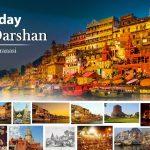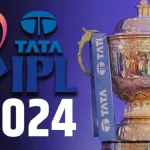
World Tribal Day
international Day of the World’s Indigenous Peoples: Beyond India’s borders, tribal communities inhabit diverse regions around the world. Their distinct lifestyles, culinary practices, traditions, and various elements set them apart from the wider populace. However, these very communities have often been marginalized due to their detachment from mainstream society. To address this disparity, a multitude of initiatives have been undertaken globally, including within India, to empower, advocate for, and recognize the rights of indigenous populations. In furtherance of this objective, the United Nations General Assembly declared 1994 as the inaugural International Year of Indigenous Peoples. Subsequently, each year, this observance is marked on August 9th. Let us delve into the pivotal aspects of this commemoration. The Imperative of Observing this Day :- Indigenous tribal groups are dispersed across the globe. Their languages, cultures, festive practices, customs, and attire display substantial diversity. Consequently, they have grappled with integration into mainstream society. Reports highlight the decline in their numbers over time. Tribal communities persistently strive to safeguard their existence, cultural heritage, and dignity. The observance of Indigenous Peoples Day serves to protect and endorse the essence of their communities, cultures, and respect. The Noteworthy Role of Native Americans :- The celebration of World Indigenous Peoples Day owes a significant debt to the endeavours of American tribal groups. Traditionally, Columbus Day was celebrated on October 12th in the United States. However, indigenous communities perceived Columbus as emblematic of colonial subjugation, tied to widespread genocidal atrocities. Consequently, a call emerged to replace Columbus Day with Indigenous Peoples Day. An international conference convened in Geneva in 1977 echoed this sentiment, advocating the replacement of Columbus Day with Indigenous Peoples Day. Starting from 1989, tribal communities commenced the observance of this day. Consequently, every October 12th came to be marked as Indigenous Peoples Day, supplanting Columbus Day. Eventually, in 1994, the United Nations officially designated August 9th as the date to observe Indigenous Peoples Day. Modes of Commemoration :- During this event, in collaboration with UN agencies and various nations, indigenous peoples and tribal organizations globally orchestrate collective celebrations. These gatherings facilitate dialogues concerning the current status of indigenous populations and the forthcoming challenges they confront. Awareness campaigns are conducted at diverse locales. Prominent Indigenous Communities in India :- Shifting focus to India, tribal communities are prevalent in states such as Madhya Pradesh, Jharkhand, Chhattisgarh, Bihar, among others. Madhya Pradesh houses 46 distinct tribal groups, constituting 21% of the state’s total population. Correspondingly, around 28% of Jharkhand’s populace comprises tribal communities. These indigenous groups are spread throughout the nation. Madhya Pradesh is home to sizable populations of Gond, Bhil, Oron, Korku, Sahariya, and Baiga tribes. Notably, the Gond tribe stands as Asia’s largest tribal grouping, boasting a populace exceeding 30 lakhs. Furthermore, the Gond tribe is present in Maharashtra, Bihar, Chhattisgarh, Telangana, Andhra Pradesh, and Uttar Pradesh. Similar tribal groups, including Santhal, Banjara, Bihor, Chero, Ho, Khond, Lohra, Mai Paharia, Munda, and Oraon, reside in regions like these.





